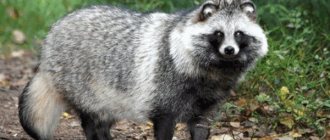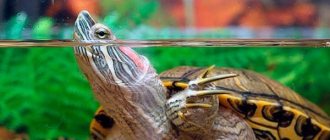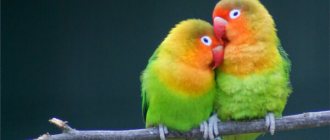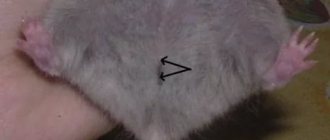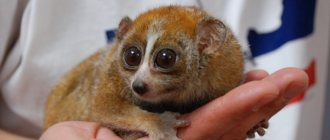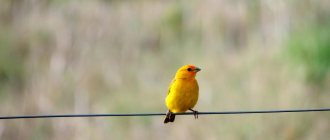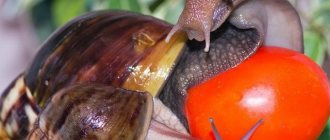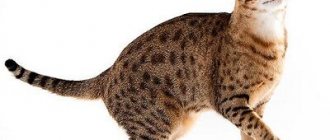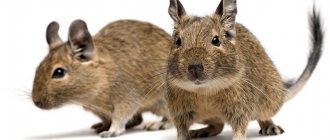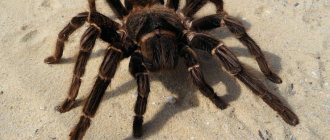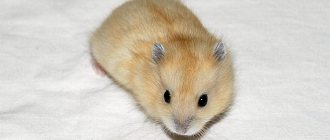Reproduction and life expectancy of the striped raccoon
The lifespan of domestic raccoons is influenced by many factors:
- Conditions of detention
- Food quality
- Diet
- Sleep routine
- Diets
- Activity of helminths
- Activity of the impact of infectious and viral diseases
- Access to outdoors and fresh air
- Access to other raccoons of the same and different sexes
- etc.
The more a person knows about minke whales, the longer and better their pets will live. How long do gargle raccoons live under the roof of exotic animal connoisseurs? – Having fallen under the tutelage of an experienced animal owner, the masked slicker with a striped tail gets complete freedom for his bandit nature. Realizing that the human family needs him, that he is welcome and that his aspirations find support and proper response, the raccoon acquires incredible resilience.
https://www.youtube.com/watch?v=ytpolicyandsafetyru
Among other things, one should not forget about all kinds of preventive measures. In particular, massage sessions have a very positive effect on the health of furry babies. Raccoons must and certainly need to be treated with anthelmintic treatments. In the end, animals need to be vaccinated. I propose to take a closer look at the topic of treatment and prevention of the striped-tailed weasel. After all, this directly determines how long domestic hooligans live.
Raccoon therapy
The weak point of any little furry is digestion. It often happens that the baby’s intestines do not allow undigested food debris to pass through. This disorder leads to bloating in the small pet's tummy. If you leave this matter to chance, the baby will die. To prevent intestinal obstruction, the little baby needs to gently massage the abdominal area.
You should not assume that the pretty appearance of this animal matches its nature. These animals are distinguished by obstinacy and stubbornness. If a raccoon plans something, he will definitely bring it to life. On the one hand, the animal shows its peacefulness towards its owner and in some cases even experiences warm feelings towards him.
During sexual activity, raccoons become very aggressive and can bite or scratch their owner for no apparent reason. To prevent this from happening, it is recommended to castrate males.
The striped raccoon is a small predator that lives primarily in North America. The length of its body can reach 60 cm, the length of the tail is usually 22-25 cm. The body weight of the animal is 7-8 kg. In its parameters, a raccoon resembles a small dog or cat. The animal has thick, brownish-gray fur.
Many breeders are concerned about the question of how many years raccoons live at home. When provided with optimal living conditions, proper care and attention, these animals live up to 14-16 years, while in the wild their life expectancy is only 3-4 years.
A raccoon living in an apartment does not cease to be a wild animal, so the first rule for choosing a pet comes down to the fact that it is best to adopt an animal from its domestic parents. However, if you have time and patience, then a baby that comes to you from its natural habitat can also, although not immediately, become your pet.
Raccoons that live in forests use hollow logs, stumps, trees for their homes, and can also settle in holes that have been abandoned by other animals. In swampy areas and where there are no trees, raccoons make their homes in tall grass. In addition, animals can take away holes from badgers.
Raccoons are quite easy to tame. To keep an animal in an apartment, you will need to equip a special room for it. You cannot lock raccoons in a cage, as they are freedom-loving creatures. His own room with a climbing tree, a sleeping place and a toilet is perfect for him.
Raccoons are active at night, and during the day they prefer to lie down in burrows. These animals are good at climbing trees, so they spend a considerable part of their lives there. The animals also swim well. It should be noted that raccoons are easy to train and can retain skills for a whole year.
Raccoons have virtually no color vision, but they have excellent vision at night. The animals have a well-developed sense of touch, so they can easily identify food by touch, both in water and in complete darkness. As for hearing, their hearing is excellent.
Raccoons are quite playful creatures, and this does not depend on their age, because even mature individuals are able to play with each other for many hours. This character trait does not disappear in raccoons, even if they are in captivity. However, this trait is more typical for females. They are ready to play not only with their relatives, but also with other representatives of the fauna.
As for the males, they prefer a solitary lifestyle and do not like it when other males appear on their territory. When the mating season begins, young males are not only within their territory, but also enter other areas, and females, on the contrary, try to stay close to the parental area.
In winter, raccoons hibernate, but their sleep is not very long, because they periodically wake up to eat. Raccoons do not hibernate alone; they prefer to gather in groups of several individuals at once.
There are times when a raccoon cannot fight back or escape. In such cases, he tries to pretend to be dead, and he does it quite well. By its nature, this animal is not only cunning and curious, but also very active and courageous.
All raccoons are overly curious. They show particular interest in places where food is found. In search of secluded places, animals are able to climb into cabinets, bedside tables and other pieces of furniture. Doors within the raccoon's access area must be securely locked, because the animal will be able to open them without much effort. Of course, it is still desirable for the raccoon to live in an enclosure, but only owners of a private house can afford this.
https://www.youtube.com/watch?v=ytpressru
Surely many may have a question: how many years does a raccoon live? The total lifespan of a raccoon is on average 15 years, however, in natural conditions they live no more than 4-5 years.
We suggest you read: How long does a cat’s first pregnancy last?
The raccoon is a very resilient animal. He rarely gets sick, is not particularly susceptible to infections, and also knows how to defend himself well from ill-wishers. Enemies should be given special attention, because how long raccoons live is directly related to them. The animals are preyed on by wolves, coyotes, bobcats, alligators and owls, and snakes can attack young ones.
In their homeland, America, raccoons have already become quite common. They inhabit not only the suburbs, but also large cities. Such a considerable number of them is due to the fact that these animals have already ceased to be hunted, and raccoons have lost their fear of people.
If you are tired of a quiet and measured life, a raccoon will help brighten up your routine. The little fluffy fidget has a cute face and a wayward character that not everyone can cope with. It is important to note that keeping a raccoon at home is quite a troublesome task. Unlike a cat or a dog, pets of this kind literally poke their noses everywhere. There shouldn’t be any difficulties with regards to nutrition and living space. The main thing is to decide whether you can tame a mischievous animal.
The striped raccoon has a stocky and dense build. The total length of his body usually does not exceed sixty centimeters, and his height is thirty-five centimeters.
The weight of such raccoons varies from five to ten kilograms, although some individuals can significantly exceed this figure. Looking at the photo of the striped raccoon, you will notice that the animal’s fur is thick and fluffy, and the undercoat is dense and matted.
The color of most individuals has gray-yellow shades, the back and sides are usually darker. The tail of raccoons has several light and dark stripes that alternate with each other, forming a beautiful, unique pattern.
The striped raccoon has a peculiar “mask”, which is its distinctive feature and sets it apart from other animals. It usually looks like two relatively symmetrical spots directly around the animal’s eyes.
The ears have a pointed shape. The paws of the striped raccoon are extremely mobile. On them the animal is able to both move and skillfully climb trees. The striped raccoon is native to both North and Central America, from which it was introduced to Europe and some Asian countries.
To date, this species has managed to acclimatize in countries such as Azerbaijan, Belarus, Germany, France and the Netherlands. On the territory of Russia you can also find raccoons, especially within the Far East.
Representatives of this species of raccoons prefer to settle directly among deciduous or mixed forests, mainly on plains or lowlands.
There must be some kind of body of water nearby: a stream, a swamp, a lake or a river. Striped raccoons living in southern areas can make their homes right on the coast.
The animal is not afraid of humans, and can settle in close proximity to cities and towns. They are often found in city squares, on the outskirts of parks and plantings, as well as among botanical gardens.
In North America, farmers are forced to wage real wars with raccoons, since they often raid chicken coops and plantings of fruit and vegetable crops.
Description and features
An animal with a dense body, up to 70 cm long, has a luxurious tail with lush hair.
The weight of the animal is 8-12 kg. Males are a third heavier than females. A natural decoration is a gray-brown fur coat with long hair. The sides and back are darker in color than the yellow-gray chest and belly. Black and gray rings on the tail are an indispensable attribute of his outfit. The fur sparkles in the sun. The thick skin serves as protection against insect bites.
Previously, the raccoon was considered a distant relative of the bear.
On a wide head there are small rounded ears. The pointed muzzle with dark, beady eyes reflects natural curiosity. Around the eyes there is a black mask framed by light rings, a dark stripe runs from the frontal part to the tip of the nose.
Bunches of vibrissae on the head, chest, and abdomen provide the animal with confident orientation even in complete darkness. Animals receive basic information through touch.
The raccoon's limbs are short. Paws with developed toes, very mobile and tenacious. When walking, the shape of the footprints left resembles a human palm print. The non-retractable claws are sharp, the soles of the paws are leathery. The animal walks carefully, quietly, relying only on its toes, and stands completely on its sole only in an upright position or in a relaxed state.
Raccoons have exceptional grasping abilities
. Their paws are so agile that the animal can easily wash itself with them, hold objects, rinse them in water, and carry objects to the right place. Pets are able to open doors and inspect closets.
The structure of the animals' feet allows them to turn 180° - a unique ability that allows raccoons to climb trees, climb to impressive heights, and go down tree trunks upside down. Raccoons are often seen hanging upside down from trees.
Many peoples call the animal a rinse bear for its fluffy coat and ability to rinse everything in water. Night vision is characteristic of predators that are awake in the dark. Raccoons have many natural enemies. Danger threatens them from lynxes, wolves, jackals, snakes, crocodiles, owls, and large dogs.
Raccoons are brave fighters, but in an unequal fight the animal pretends to be dead, showing natural cunning.
The fluffy beauties are valued for their fur and are considered a commercial species; some peoples consume animal meat. Increasingly, raccoons are being purchased for home keeping, as the animals adapt well and become friendly pets, although very mischievous.
The name "raccoon" comes to us from the Indian word "Arakun", which translates as "scratching with one's hands."
Raccoons are carnivorous mammals belonging to the raccoon family, which includes four species of these animals (we will describe each species in more detail below). Also close relatives of raccoons are raccoon dogs (they are often confused with raccoons), nosuhi, kakimitsli and kinkajou. And the raccoon’s distant relatives even include dogs and pandas.
The most common among raccoons is the raccoon, which is also called the “gargle bear” or “washing bear.”
The body length of raccoons is usually 45-60 cm; the average weight of a raccoon, depending on the species, can vary from 2-5 to 8-15 kg. Moreover, males are often larger than females. The body structure of raccoons is a bit like a fox or a dog. But the paws of a raccoon are an important distinguishing feature of these animals; they have very elongated pads, somewhat reminiscent of human palms. Thanks to the similar structure of their paws, all raccoons have excellent grasping abilities.
Raccoons climb trees with ease and can manipulate various small objects.
A raccoon's tail is long and usually bushy. A raccoon's fur depends on its species; for example, the raccoon's fur is short, while the raccoon's, Cosemelle and Guadalupe raccoons' fur is, on the contrary, longer and fluffier. As for color, all raccoons are grayish-brown in color, and their tail is painted with transverse black and white stripes.
The raccoon's head is very wide, has a short and sharp muzzle, and small and rounded ears.
Interesting fact: all raccoons not only climb trees with ease, but also swim well, and can swim even in cold water, which is facilitated by the special composition of their fur, consisting of 90% thick undercoat, as if specially adapted by nature to protect against cold water.
Reproduction and life expectancy of the striped raccoon
Each raccoon has its own territory, the radius of which usually reaches one and a half to two kilometers. Directly in this area, the animal has several shelters that are not occupied by other representatives of the species.
Sometimes the border possessions of different raccoons intersect, then they have a kind of competition for “control” over the disputed area. In winter, the striped raccoon hibernates, unlike other members of its family. True, this applies only to those individuals that live in the northern regions.
The duration of hibernation for gargle raccoons ranges from four to five months, but the sleep itself cannot be called deep enough, because vital processes do not slow down during sleep, and body temperature does not fall.
On particularly warm days, the animal may even leave the shelter for several hours and take a walk. In winter, the striped raccoon is definitely less active than in the warm season.
During winter hibernation, striped raccoons feed on fat deposits that are deposited under the animal’s fur in a layer of up to three centimeters. Up to ten individuals can simultaneously cram into a particularly large hollow or large shelter for the winter.
The vision of raccoons is extremely well developed, which in turn allows them to see perfectly even in the dark. Their hearing is no worse than their eyesight, which is why the striped raccoon is an excellent predator.
With the help of their very tenacious paws, representatives of the species are able to quickly move along tree trunks. Moreover, they can do this while upside down or sagging like sloths.
The striped raccoon is highly resistant to various viruses and infections, and the fur and dense skin of the animal allows it to protect itself from the bites of all kinds of insects, the nests of which it quite often raids.
Raccoons living in natural conditions, in turn, can themselves become victims of coyotes, wolves, lynxes, owls, and alligators. For young individuals, snakes can pose a certain threat.
Raccoon raccoon puppies are born after nine weeks of the female's pregnancy. Usually three to four cubs are born at a time. Much less often – one or more than seven.
During the first three weeks of life, raccoon cubs are helpless and blind, but after a few weeks they become completely independent and stop feeding on their mother’s milk.
How long do striping raccoons live? A gargle raccoon can live more than eleven years at home. In the wild, the average recorded life expectancy is five to six years.
For those who want to buy a striped raccoon, you should take into account the fact that the animal is a predator and prefers to be nocturnal, which in turn can cause some inconvenience. If you want to know the features of keeping a domestic raccoon, read our article.
We suggest you read: Diseases of aquarium fish. Fin rot. Treatment of fin rot.
However, breeders do not classify raccoons as wild creatures, since this species of animal is quite domesticated. To the question “Is it possible to keep a rinse at home?” We can safely answer yes. However, it is important to adhere to the basic rules for care and maintenance, which we will talk about now.
- Unlike cats, dogs and even ferrets, raccoons require 5-7 times more attention. You need to constantly play with them; you will have to monitor the animal at least 18 hours a day.
- It is important to understand that domesticating raccoons is a long and grueling process. Even if you get another small animal, it is not a fact that it will completely get used to its owners. It will take a long time until your new guest begins to trust you. Animals bite painfully, so the process of adaptation will not take place without holes in the fingers of the owners.
- Raccoons are nocturnal pets; they will not change their usual routine at the whim of their owner. Unlike ferrets, which adapt to humans, stripers are more temperamental. This suggests that as soon as you fall asleep, the raccoon will begin to lead an active lifestyle. He will jump, gallop, and climb into hard-to-reach places. In this case, the actions are usually accompanied by a “hooting” sound, similar to a bird’s drill. It is at night that the raccoon makes provisions for a rainy day, so it is especially important to put food and other things in hard-to-reach places.
- For the reason stated earlier (raccoons bite painfully), it is not recommended to keep pets in an apartment or house where small children live. The baby can scare the animal, as a result of which the latter will begin to show aggression. As a result, you will get a crying child and a scared raccoon.
- As for the mischief of garglers, they prefer to scratch wallpaper, damage furniture upholstery, linoleum, curtains, etc. For this reason, raccoons are kept in a house or apartment that is not of particular value in terms of repairs. You can also give the animal a separate room with bare walls by installing its cage and house in the room.
Important! Breeders do not recommend getting a raccoon to people who have not encountered keeping animals before. A pet requires careful monitoring from the outside, you need to be present in its life, the animal needs to be trained. However, if you previously owned a dog, ferret or cat, you can decide on a similar adventure. At first, the rinse's behavior may be shocking, but over time you will get used to it.
Reproduction of raccoons
Male raccoons are polygamous. This means that during the mating season, which usually occurs in the cold season, but can last until early summer, they strive to impregnate as many females as possible. During the mating season, males look for mates, gradually expanding their search territory. The raccoon searches for a female ready to mate by smell. After fertilization, the male leaves her and goes in search of a new “wife”. Male raccoons live separately and do not take part in raising their offspring.
The female is left alone. Before the babies are born, she becomes very aggressive. Pregnancy lasts a little over two months. Every year the female gives birth to 4-5 cubs. Newborn raccoons are completely helpless: they are deaf and blind, and their weight does not exceed 75 grams. Babies begin to see the light on the 20th day of life. At first they feed only on mother's milk, and when their baby teeth grow, little raccoons switch to solid food.
Immediately after birth, these babies begin to grow fur and almost immediately black and white spots appear on their faces. Interesting fact: female raccoons feed their offspring at least 24 times a day. The cubs communicate with their mother using characteristic sounds - a piercing scream or whistle. The female, when communicating with the babies, makes sounds reminiscent of grumbling or rumbling. The older the animals become, the less and much quieter they communicate.
General information about raccoons
These animals are native to America, but today funny stripers are found in almost every corner of the planet. This is explained by the fact that the animal is perfectly able to adapt to almost any habitat. In the wild, raccoons prefer to live in mixed forests. A prerequisite is the presence of a nearby body of water.
https://www.youtube.com/watch?v=ytcreatorsru
The animals are distinguished by a rather strong physique and small dimensions. An adult raccoon rarely grows larger than the average dog. These animals weigh no more than 10 kg.
The main feature of striped raccoons is their passion for cleanliness. It is this habit that touches people so much. Before eating food, a raccoon always washes it. At the same time, the animal is distinguished by great intelligence and unprecedented energy.
Types of raccoons, photos and names
Raccoon gargle
This raccoon got its unusual name due to its habit of rinsing caught prey in water. Thus, the clean raccoon cleans it of sand. It is also the most common among raccoons, found throughout North and Central America, and more recently in Europe. Everything we wrote above concerns primarily raccoons.
A distinctive feature of this raccoon is a characteristic pattern around the eyes, somewhat reminiscent of a bandit mask. This raccoon has shorter fur and a more streamlined body. It got its name from its gastronomic love for crayfish. Lives in the jungles of Central and South America.
Cozumel raccoon
This species of raccoon is very rare, as it lives in a limited area, namely on the small island of Cozumel in the Caribbean Sea. It also differs from its other relatives in its brownish-grayish fur and the presence of a yellow tint on the tail.
Guadalupe raccoon
This species of raccoon is currently on the verge of extinction and is listed in the Red Book. It lives in the humid areas of Guadeloupe, preferring to settle in marshy areas, as well as near reservoirs, rivers and lakes. Its appearance is similar to a striped raccoon.
Features and habitat of the striped raccoon
Many owners of clean animals note that before getting such a pet, they did not study the required amount of information about it. For example, some people don’t even realize that raccoons are predominantly nocturnal and prefer to sleep during the day. This becomes a huge problem, since in the dark the fidget literally begins to disassemble into small parts everything that falls into its paws.
According to reviews from owners, raccoons should not be kept at home if a child under 7 years of age lives in the apartment. You need to understand that a wild animal will not calmly respond to games and tail tugging, as a dog or cat would. If a raccoon is in discomfort, it may bite or scratch anyone who touches it.
Raccoons get along well with cats and dogs at home. However, if there is a hamster, parrot, fish and other small animals in the house, then the restless animal will perceive them exclusively as food.
In addition, many noted that if a raccoon appears in the house, all possible cracks, ventilation holes and other holes will have to be sealed using a strong metal mesh. Otherwise, the pet will definitely climb there or begin to hide its treasures there.
Also, in reviews of owners about raccoons at home, the resourcefulness and ingenuity of these cute animals is often mentioned. Unfortunately, in this case this is not their advantage. The fact is that raccoons easily open doors, latches and bolts, so you will have to think about more reliable protection.
To accustom a striped raccoon to a litter box at home, you will have to spend all your nerves. This animal is used to going to the toilet wherever it feels like it. During the rutting season, they even begin to mark their territory.
As mentioned earlier, these animals are not picky eaters, so it is important to monitor their diet. A fidget's diet should be very varied. However, this is very easy to achieve.
Experts and “experienced” animal owners recommend periodically feeding the animals:
- dog or cat food;
- small rodents, birds and frogs;
- eggs;
- fish;
- nuts and acorns;
- berries.
Giving sweets and canned fish to raccoons is strictly prohibited. As luck would have it, this is the kind of food that fidgets adore most, so you will have to be vigilant. There are also several products that are recommended to be included in the animal’s diet.
This exotic animal must feed on the same food that serves as food for its counterparts in the wild. If the owner cannot choose the right diet for his predatory pet, dry cat or dog food can be used as a temporary measure to ensure that the animal receives the full range of vitamins and microelements it needs.
A raccoon living at home gets along well with pets such as a dog or cat, provided that the animals are periodically separated into different rooms. But if the apartment also contains small rodents or birds, their communication with the raccoon is unacceptable, since under natural conditions they are food for the predator.
We suggest you read: The lifespan of a fox is years. Common fox, description, habitat, lifestyle, what it eats, reproduction, photo, video
How long do domesticated and wild raccoons live?
It is believed that they began to have such an animal in the home in America, appreciating its peaceful disposition and pleasant character. This happened relatively recently, but in a short period of time, breeders managed to achieve impressive results and significantly extend the life of a raccoon: in nature, the animal does not live longer than 5 years.
In total, 3 breeds of raccoons are known today, but stripers are the most directly domesticated. Other species even receive less attention, since crustaceans are named for their main habit - feeding on various crustaceans, which is quite expensive and not always feasible. And the Cozumel raccoon is a very rare breed that can only be found in the Caribbean Sea. The striper is accessible, relatively inexpensive ($300-370 per baby) and omnivorous.
How long raccoons live is mainly influenced by the conditions in which they are located, since genetically they are quite healthy animals. However, it is recommended to purchase them at the age of 1.5-2.5 months, since during this period the formation of the psyche occurs, the raccoon adapts better to a new place, is better amenable to “training”, and gets used to a person more easily. True, age does not affect some aspects of life.
You need to remember about the aggressiveness of raccoons towards strangers - this is one of the main barriers to keeping them. Physical influence cannot be used in education. The animal perceives this as an attack, and the attitude towards the owner may become hostile.
It is better to keep your pet in a free enclosure with everything necessary: a house, branches, ladders, scratching posts, a sleeping place, a bath with water. The bedding can be sawdust.
The home diet should contain not only industrial feed, but also prepared mixtures of minced meat, cereals, vegetables, cottage cheese, and eggs. You can feed twice a day.
The raccoon is a very active animal and creates a lot of trouble at home.
Raccoons are native to North and South America and can be found in forests from Canada to Argentina. With the discovery of America by Europeans, raccoons came to Eurasia and one of their species, the striped raccoon, was able to take root quite well in our latitudes. In particular, populations of the striped raccoon have been created in many European countries and also in the Caucasus.
In turn, raccoons themselves can become prey for other larger predators: bears, wolves, lynxes, coyotes, wolverines and cougars. In an attempt to escape from their enemies, raccoons often resort to trickery - pretending to be dead, but when this trick does not work and it is not possible to escape, they desperately resist, fighting with all their might for their lives. However, unfortunately, this is not always possible.
Also, to a certain extent, humans are the enemy of raccoons; American Indians sometimes killed these animals for their fur. Later, white colonists also began to practice hunting raccoons. Fortunately, the active reproduction of these animals has not put their population at risk.
Undoubtedly, the presence of enemies in natural conditions negatively affects the life expectancy of animals. The raccoon often becomes prey for wolves and coyotes, bobcats and bears, owls and alligators. The offspring are often preyed upon by large carnivorous birds and snakes. Thus, the average lifespan of a raccoon can be reduced to 2-3 years.
Another factor influencing the mortality rate of these animals in natural conditions is disease (rabies, canine distemper). In the mid-Atlantic and southern regions of the United States, several thousand animals die from these diseases every year. In cities, the main enemies of raccoons are considered to be large dogs, although one adult animal is capable of repelling the enemy: its weapons are strong claws and teeth. Well, if a pack attacks, the raccoon has no chance to survive.
It is precisely for such cases, when she and her offspring are in danger, that the female prepares up to 12 shelter holes in order to quickly relocate the brood.
Nutrition
The main search for food among raccoons is usually concentrated around water sources. They can catch fish, arthropods, frogs and some species of turtles.
Raccoons also love turtle eggs, hamsters, muskrats and musk rats. When hunting in the forest, the animal feeds mainly on insects, larvae, earthworms, fruits, berries, nuts and bird eggs.
Some regions suffer some damage due to the fact that raccoons regularly raid chicken coops and industrial poultry farming areas.
Raccoons, being predators, are not averse to eating rabbits, snails and squirrels. However, their diet also includes numerous berries, cherries, gooseberries, grapes, vegetables, grains and much more.
Head
It is quite large in raccoons, with a somewhat shortened front part. The nasal bones of these animals are short and wide, and the auditory drums are rounded. The occipital crest is well defined, and the sagittal crest is weak. Raccoons have between 36 and 42 teeth.
The muzzle of these animals is short, with erect large ears that are visible from the fluffy fur. On the chest, belly, head, on the inner sides of the limbs, as well as near the claws of these animals, there are vibrissae that help them move confidently in complete darkness.
Where to place a new pet
Speaking about how to keep a raccoon at home, many note that it will be very difficult to get along with it in a small apartment, since it is usually given a separate room. If we are talking about a large country house, then the pet will feel much more at ease there.
For a raccoon, it is best to build a large wooden enclosure. It can also be placed in an attic or attic. However, you need to take care of the locks that a nimble baby will not be able to open.
It is imperative to place bowls of food and water next to his sleeping place. In hot weather, these animals love to swim, so it won’t hurt to please them with a basin of cool liquid. In this case, the water will have to be changed very often, since raccoons constantly wash everything.
As a sleeping place, you can build a small house in which you need to put rags and sawdust.
Lifespan in captivity
It is because of their curiosity and restlessness that raccoons are prone to destruction. But despite this fact, today these animals are becoming more and more in demand as pets. Raccoons owe the increased interest from people to their appearance, as well as to the fact that they are incredibly interesting and fun to watch. Living in a zoo or with a loving owner, tabbys can easily cross the 15-year mark and even live up to 20 years.
The following factors contribute to this life expectancy:
- Constant access to food, including the fact that at home and in zoos, owners try to create the most balanced diet for the animal, ensuring good health.
- Veterinary care - regular vaccination eliminates the risk of not only getting sick, but even becoming a carrier of diseases, which can rarely be avoided in the wild. In addition, it is possible to extend the life of a fluffy by preventing helminthiasis, introducing vitamin complexes into the diet, etc.
- The absence of enemies and external threats - in a zoo or in an apartment, nothing threatens a raccoon and the risk of premature death is practically reduced to zero.
Increasingly, pet lovers are turning their attention to exotic animals. One of the most common animals of this choice is the raccoon. These fluffies are increasingly appearing in private homes and zoos.
This is due to the general popularity and cute appearance of the animal. Having made such a friend, many owners wonder: how many years does a raccoon live at home? Let's consider the answer to it in more detail.
On average, an ordinary raccoon lives up to 12 years at home, but there have been cases of survival up to 16 years. For a happy animal life, the following conditions must be provided:
- food quality and nutritious diet;
- rest and activity schedule;
- dieting;
- walks in the open air;
- prevention of exposure to diseases and the presence of helminths.
The more knowledge the owner has about how a raccoon lives, the greater the likelihood of a long and happy life for the pet.
Once in private ownership, the animal has no natural enemies, it no longer needs to search for food, care and attention appear - all these factors have a beneficial effect on the number of years lived.
But not all animal lovers adhere to preventive measures, which can significantly reduce the raccoon’s quality of life. Such events include:
- veterinary supervision;
- timely vaccination;
- proper care and maintenance.
If you follow all the rules, the domestic raccoon will live a fairly long life, delighting its owners.
Raccoons are omnivores and this fact does not always have a beneficial effect on the life of the animal. At home, the animal will not refuse any food, including sweets and foods harmful to its body.
One of the problems of the little gargle that causes big trouble is the digestive tract. The thing is that the intestines may not cope with certain foods and cause bloating, poisoning and, as a result, intoxication of the whole body.
If measures are not taken in time, the animal will die. This outcome can be avoided by using gentle massage movements in the abdominal area after each meal. This approach is especially relevant for babies under the age of one year.
Don't forget about the ubiquitous parasites. Raccoons that have access to the outdoors are susceptible to helminth infection. Worms significantly spoil the life of not only the animal; with such a disease, everyone around them, including people, can become infected with it.
Under natural conditions, wild raccoons infected with intestinal parasites rarely survive more than 5 years, so anthelmintic treatments are very important for domestic gargle.
Another parasite that causes various diseases can be ticks. The raccoon has thick fur and after a walk the little pest is very difficult to notice. Things can end very badly if you don't take measures to protect yourself from ticks.
Grapes, nuts and dried fruits
About 2 kg of grapes will be required per month. However, it is worth considering that not all raccoons love it. Therefore, you should not buy a lot of berries at once.
Raccoons can be given any nuts. A pet can eat up to 1.5 kilograms of almonds, cashews or other types of this treat per month. As a result, you need to be prepared to spend up to 700 rubles monthly on this.
Also, many pet owners note that their pets love dates, various candied fruits and raisins. You will also have to buy about 1 kg of them every month.
Lifestyle and nutrition
Mixed forests with old hollow trees and the presence of ponds or swamps are most suitable for the striped raccoon. He avoids coniferous forests, as well as forests without bodies of water. In the south of its range it is found on the sea coast. Raccoons easily adapt to the anthropogenic landscape, settling on the outskirts of fields, in gardens, and often in cities and suburbs. The raccoon makes its home (often several) in hollows. As a last resort, it uses ground shelters - crevices in rocks, badger holes; He doesn’t know how to dig holes himself. Leads a twilight-nocturnal lifestyle; spends daytime hours in the den. It goes fishing at dusk, walking around its area (with a radius of up to 1.5 km) in search of food. A raccoon rarely moves more than 1.5 kilometers from its home. In this case, the areas of individual individuals often overlap each other, and, as a result, the density of raccoons in the areas can be quite high.
The striped raccoon deftly climbs trees; very tenacious fingers allow it to hang, clinging to a horizontal branch, or go down the trunk upside down. Thanks to excellent night vision and vibrissae, tufts of which are located not only on the head, but also near the claws, on the inside of the limbs, on the chest and stomach, the raccoon can gallop confidently even in complete darkness. The only representative of the raccoon family that goes to sleep for the winter. Sleep is shallow and intermittent. In Canada it lasts 4-5 months; in the southern regions the raccoon often does not fall asleep at all. Sometimes up to 10 individuals gather in large hollows for the winter.
The raccoon is omnivorous. Its diet shows a seasonal change in food. In spring and early summer, the basis of its diet is animal feed; in the second half of summer and autumn he prefers plant foods. The raccoon's main animal food is insects and frogs, less commonly reptiles (snakes, lizards), crayfish and crabs, fish, rodents and bird eggs. The plant diet consists of berries, acorns, nuts and fruits. Before eating, the raccoon rinses the food in water; hence its Russian name “poloskun”, Japanese “洗熊” (“araiguma”, lit. “washing bear”, although the Japanese also call the common badger) and the Latin species lotor. In captivity, raccoons perform the same operation even with perfectly washed food. The animal receives most of the information about its environment through touch. If raccoons live close to people, they willingly rummage through garbage in search of food; in such cases, contact with them is best avoided, since raccoons can carry dangerous diseases and infections.
The raccoon is a very resilient animal. It is immune to many infectious and invasive diseases and aggressively defends itself against predators. However, you should be careful because raccoons themselves can carry serious infectious diseases. Raccoons are attacked by coyotes, wolves, bobcats, elks, alligators, owls; on the cubs - snakes. In the Ciscaucasia, the number of raccoons is well regulated by the common jackal. Moreover, both of them here are invasive species (Penzikov, 1983).
By nature, this animal is active, very curious, pugnacious, brave and cunning. In the United States and many other countries around the world, raccoons are sometimes kept as pets. As a rule, raccoons live in the wild for no more than 5 years. They live at home for about 20 years.
Cookies and other products
There are a lot of jokes about the fact that raccoons are very fond of these flour products. This is actually true. However, do not forget that sweets should not be given to animals. Therefore, you need to buy cookies without glaze, preferably with the lowest sugar content. If you do not limit the raccoon in this delicacy, then it can eat up to 4 packs of flour products per day.
However, sometimes a raccoon may refuse its favorite type of cookies, so it is better to have several packs of different varieties in stock.
Sometimes you can pamper your pet with cottage cheese and shrimp. Also, some pet owners note that raccoons love chicken hearts. However, it all depends on the pet’s mood. If he wants to play, he will simply smear food on the floor and go about his business.
Based on all of the above, it is obvious that not everyone can afford to keep a raccoon at home. Even having come to terms with the complex nature of the animal and the fact that it will destroy things it doesn’t like, you need to be prepared to spend money on feeding the baby. In addition, you need to remember that raccoons are not pets. They are very accustomed to freedom and can behave unpredictably.
The flathead raccoon is an adorable wild animal that has recently become increasingly popular as a pet. Having decided to place a raccoon in your home, you must not only carefully weigh the pros and cons, but also properly prepare for receiving this exotic animal.
External features
Raccoons are almost impossible to confuse with other animals. Their dense and stocky body is covered with gray-brown fur, their muzzle is decorated with a black and white mask, and their luxurious fluffy tail is entwined with wide black-brown or yellow-gray rings. A black-brown stripe stretched from the forehead to the tip of the nose.
Raccoon fur has a dense undercoat. It protects animals from the cold, thanks to it the animals do not freeze, catching prey in icy water. Since ancient times, it was the fur of these animals that attracted humans, although some peoples also eat the meat of animals.
The body length of raccoons ranges from 40 to 65 centimeters (this depends on the species), the tail is about 25 centimeters long. Raccoons weigh around 6 kilograms, but closer to autumn their weight increases more than four times and reaches 25 kilograms.
How to place a raccoon in an apartment
https://www.youtube.com/watch?v=ytadvertiseru
If it is possible to place your pet in a separate room, on a loggia or balcony, then this will be the best solution for him. In this case, you need to monitor the temperature. In winter, the room where the animal lives should not be colder than -5 °C. In his room, you need to install a warm house filled with wood shavings for additional heating. In summer, the raccoon should not suffer from direct sunlight to avoid overheating.
If it is not possible to house the pet separately, you should prepare a spacious enclosure for it or release it only when the owners are present at home. Under no circumstances should this cute predator be left outside the cage unattended. A nimble animal with tenacious limbs and remarkable intelligence, it is capable of mischief, opening cabinets and climbing into various places not intended for it.
